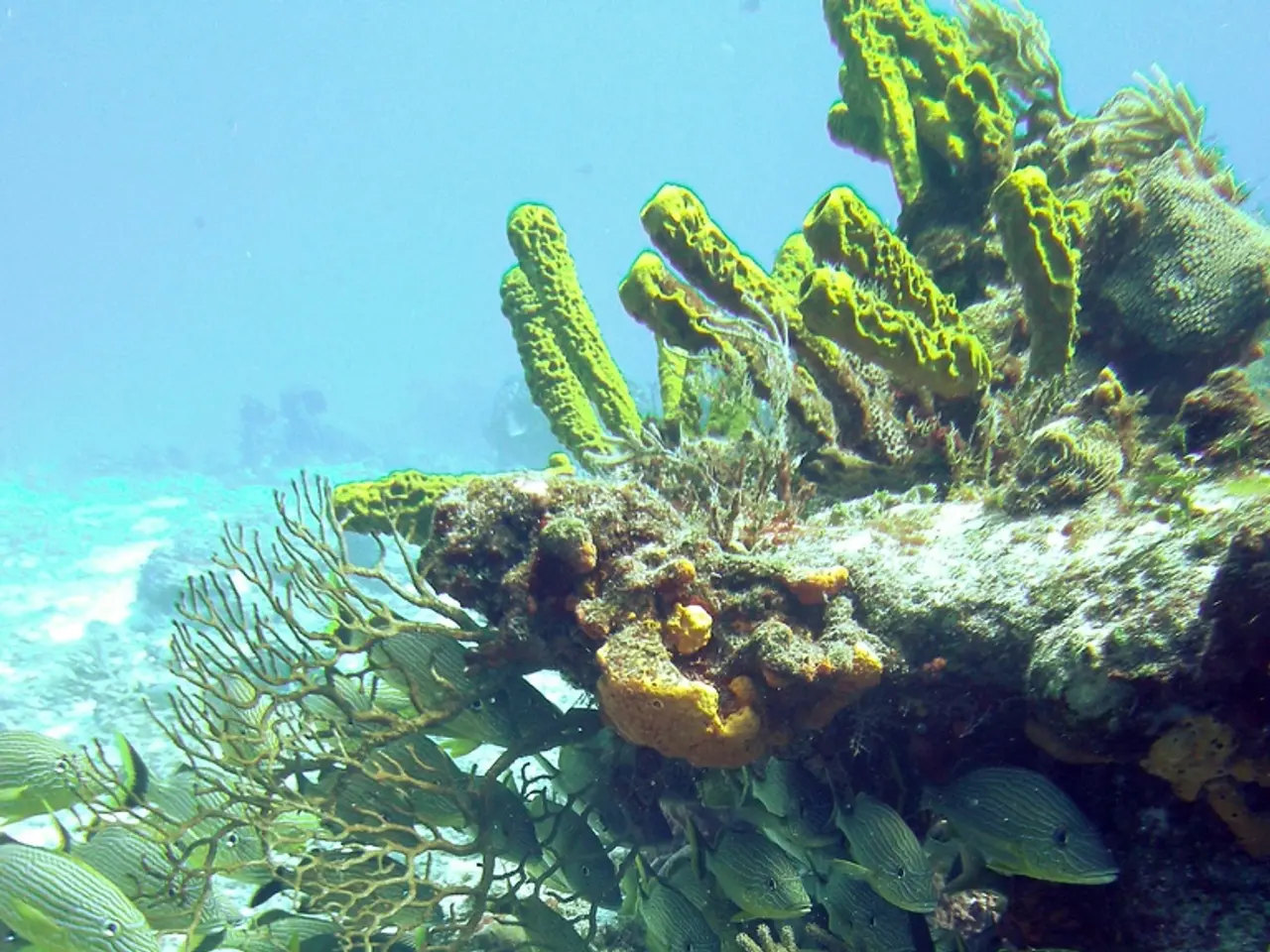Abundant Fish Fool Sonar Technologies in the Deep Scattering Layer's Depths Revealed
The deep scattering layer (DSL), a dense cloud of marine life hidden beneath the waves, is undergoing intense scrutiny as climate change and overfishing reshape the oceans. Scientists are racing to understand how rising temperatures and changing currents will affect this hidden world.
This living curtain, composed of countless small fish, squid, and zooplankton, is a vital part of the ocean's ecosystem. It plays a crucial role in transferring nutrients and carbon between the surface and deep waters, making it vital for the health of our oceans.
The DSL's inhabitants are a constant game of hide-and-seek. Some creatures rely on speed, others on camouflage, and some even use their bioluminescent lights as decoys to evade predators. Life in the DSL is a constant dance, with predators such as squid, whales, and large fish depending on the nightly ascent of the DSL creatures for food.
The DSL is typically found between 300 and 1,000 meters below the ocean surface, in the mesopelagic zone where light penetration decreases substantially. It occupies this zone rhythmically, descending to deeper zones during the day to avoid predators and ascending at night to feed near the surface, showing a strong synchrony with the circadian rhythm of light and dark.
Exploring the DSL is challenging due to its residents being small, fragile, and quick to flee from bright lights or noisy equipment. However, scientists are developing quieter, more sensitive tools like specialized sonar and acoustic cameras to observe the DSL in its natural state.
The DSL's ability to reflect sonar waves strongly has caused challenges in interpreting sonar data, particularly for military and scientific vessels. Despite these challenges, acoustic detection of the DSL is crucial for understanding biomass distribution in the ocean’s twilight zone, which is difficult to study visually or by net sampling.
Each new discovery about the DSL deepens the mystery, revealing how much we still have to learn about life in the deep. The DSL reminds us that some of the planet's greatest wonders are still out of sight, waiting to be discovered by those curious enough to look. The revelation of the DSL forever changed our understanding of ocean life and the complexity hidden beneath the waves.
In conclusion, the DSL is a critical but challenging ocean layer to research, characterized by dense organisms migrating daily between mesopelagic depths and surface waters, with pivotal roles in ecology and biogeochemical cycles but demanding sophisticated acoustic and sampling techniques for effective study. As we continue to unravel the secrets of this hidden world, we gain a deeper appreciation for the intricate balance of life in our oceans.
- To further our understanding of the environmental changes in the oceans, it is crucial to study the effects of climate change on the DSL, as it plays a vital role in nutrient and carbon transfer between deep and surface waters.
- As climate change continues to reshape the oceans, advancing technology and data-and-cloud-computing in environmental-science could provide researchers with the tools they need to decipher the complex behaviors of DSL inhabitants more accurately.
- The research on the DSL will not only expand our knowledge of climate-change impacts on the environment but also unveil new insights in the interconnectedness of various species and their interdependence across different layers of the ocean, offering valuable information for the future of environmental science.




